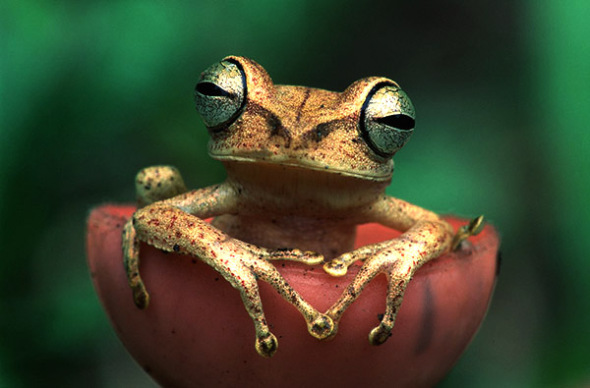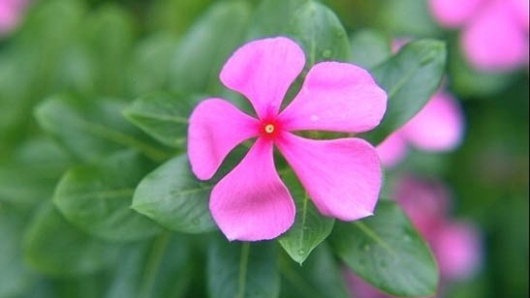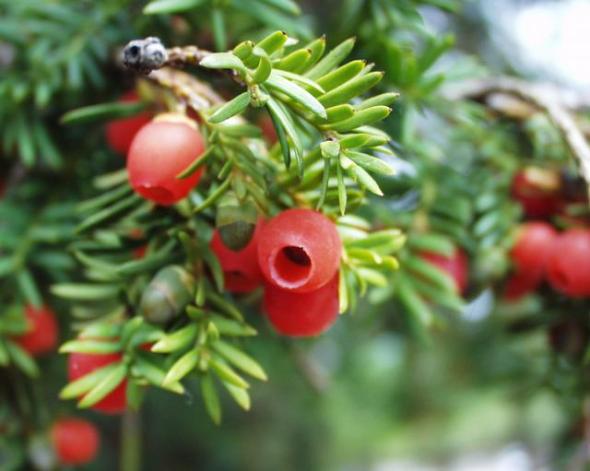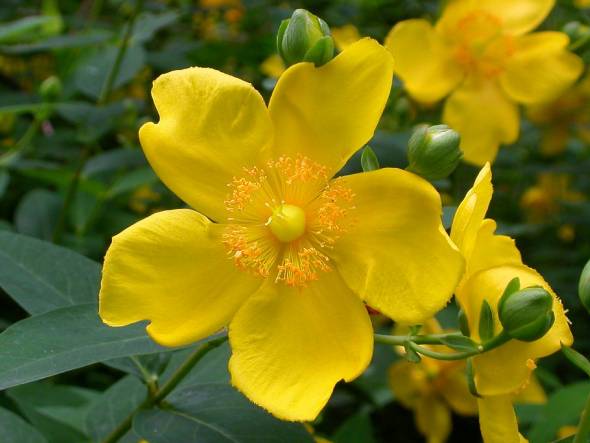Botanical Activism - Be the CHANGE you want to SEE in this world
A topic that we don’t normal speak about is botany Botanical conservation preservation is one of the most highly important subjects that actually goes amiss on many conversational pages to conferences internationally which is rarely spoken about in vast detail.
HISTORY IN BRIEF
Botanical conservation is just as important as mammal and non-mammal conservation which is being destroyed by habitual destruction, over population, pollution, and logging on a daily basis at a gargantuan level which is concerning ourselves from which we have our own botanical welfare unit that trained at Writtle College in London, Essex United Kingdom where most to many famous botanists trained that now help to preserve our delicate species of plant life globally.
Carl Von Linnaeus - http://en.wikipedia.org/wiki/Carl_Linnaeus although didn’t train at Writtle educated many botanical conservationists in the 1700’s on a great deal of knowledge within the plant and arboretum world.
Professor Linnaeus then went on to classify each individual plant with what we now know as the “generically bionomical naming system that’s used to identify one singular family of “plant” as in “species” to “genus” then X or “cultivar” for example a simple Birch tree to you would just be that!. Professor Carl Von Linnaeus changed this naming “the incorrect common naming system that misidentifies many plants to the human eye” of which the Birch is and should be named as Betula.
Carl Linnaeus was an 18th Century scientist who is considered the father of modern taxonomy, the classification of organisms.
The naming system goes in to great detail though in pure Latin that would then again for example rename the common Birch down to what its appearances was, so those that see little girl wigs on the end of Birch’s budding deciduous stems would then explain to us that we was not just looking at a Birch but in fact a Betula pendula that’s height is roughly forty foot is deciduous and has the most beautiful pendulating stems an “almost entire correct classification of one singular species of tree in one simple name”. The same generically naming system is also used within medicine, mammal and non-mammal identification.
HOW IMPORTANT IS OUR BOTANICAL WORLD THOUGH?
Botanical horticulture to arable agriculture and forestry management is extremely important, and without small shrubs, trees to medicinal plants and vegetables then we the human race would not be able to survive on today’s copiously destructive planet, and that is regrettably a misfortunate fact of life.
Plant life is used for many things that you the human aren’t even aware of, from non-synthetic medicines and synthetic medicines to boost the power of the active properties, to vegetables, rape seed fuel to palm oil that’s now being grossly used en-masse which is seeing vast amounts of plantations planted ripping up many medicinal plants, displacing Orang-utans, to filling our environments sensitive atmosphere with humungous amounts of carbon from the agitated peat swamps.
See more here. http://www.greenpeace.org/international/en/publications/reports/palmoilexpansion/ the palm oil tree is indeed a spectacular plant http://en.wikipedia.org/wiki/Elaeis however it’s being over exploited as it possess “gold” and unfortunately in today’s society where there is money there is happiness even if its destroying our precious Orang-utans and their environment along with the Sumatran Tiger and Ramin Tree http://en.wikipedia.org/wiki/Gonystylus
We don’t just rely on plants such as vegetable crop to keep us alive we actually require them for natural medicines that are found mostly in the tropical rain forests of Brazil, Asia, Africa and the Americas from which habitual destruction from logging, pulp and paper trade is playing a vast role in the catastrophic destruction of our medicinal plant life.
http://www.scientistlive.com/European-Science-News/Dentistry/Rainforest_remedy_could_spell_end_of_dental_pain/25473/
Many narcotic cartels also work within these heavy foliaged forests that is also a underlying problem which see’s many opium and Marijuana crops grown on a massive scale http://www.drug-aware.com/articles/157/cocaine-and-the-destruction-of-the-rainforests/ although narcotic units are trying their hardest to break these plantations down what they seem to forget is when destroying them on locating such criminal forestry networks they simply set them ablaze killing surrounding plant life thus making that singular or group of very important plants life harder to then spread their seed’s and/or pollenate.
Cities and vast populated areas need green life to, to clean the air from exhaust fumes that build up within inner city limits and sprawling urban districts. You may think that when you drive your vehicle in to the local town or city that you’re doing your legs good however you’re making the surrounding trees and plant life’s a living misery even if your car is fitted with a catalytic converter.
You can see some of the impact of air pollution botanical species when you look at damaged plants. Pollution enters the plant and oxidizes its tissues, leading to discolored leaves and speckled leaves that often look like they are burned or bleached.
Less visible but still important is the fact that plants grown in polluted areas have fewer leaves and a smaller root system than do plants with healthy air. They also have reduced yields and often drop their leaves earlier in the season than healthier plants and tress do.
Air pollution from carbon output is more than evident on this Spruce that will eventually die
Similar problems can be caused by soot and other air pollution problems, not to mention the unpleasant aspects of gardening in polluted air from the gardener’s point of view.
Plants that are sensitive to this type of pollution are listed here below I have included only the common names so one can familiarise oneself with these plants and know what to grow and not what to grow on urban city limits.
- Red and speckled alders
- Groundnut
- Dogbane and spreading dogbane
- Mugwort
- Tall, swamp and common milkweed
- Redbud
- American hazelnut
- Green and white ash
- Black huckleberry
- Sweet Gum
- Evening primrose
- Virginia creeper
- Sweet mock orange
- Ponderosa, Pacific, Jack, Jeffrey, Monterrey, Loblolly and Virginia pines
- American sycamore
- Black cherry
- Allegheny, thorn less and sand blackberries
- Sassafras
- Goldenrod
- Huckleberry
- Northern fox and European wine grapes and
- Buckeye
Plants that are pollutant lovers and will consume it then spit it back out I have listed below in brief detail using the generically listed naming system.
- Amelanchier Canadensis
- Aucuba japonica
- Berberis
- Ligustrum ovalifolium
- Olearia haastii or Osmanthus burkwoodii
- Syringa vulgaris
- Tamarix tetrandra
- Weigela florida
Madagascar Periwinkle is located in many arid Rain Forests - Used to fight Malaria which is sadly being destroyed at an ever increasing rate by illegal logging and the paper and pulp trade.
Plant life though is not just used by us for keeping out chemical pollution’s they are also ideal for noise and wind breaks. Noise pollution’s I shall detail more of rather than that of wind breaks of which you can read more on here - http://www.extension.umn.edu/agroforestry/components/selecting-trees-and-shrubs-in-windbreaks.pdf
Noise pollution kills much wildlife and can interfere to with our way of life vastly thus pushing us in to rural areas. Many cities to new apartment blocks and factories contain at least some species of tree life that help to filter out noise pollution which does have a considerable impact on one’s health.
Noise pollution affects everyone, yet this problem is largely ignored by most people. Upon hearing loud noises and sounds, we might be irritated but feel at a loss to do anything about it. Noise pollution comes from various sources including traffic, airports, industries, factories and highly populated urban areas. However, these are not the only ways we can be affected by noise pollution. A loud musical event such as a rock concert, occupational noises, and large crowds are just as detrimental to humans, especially with repeated exposure.
The effects of noise pollution on humans are being studied all over the world. The U.S. Environmental Protection Agency recommends a “safe noise level” of no more than 55 decibels. Decibels are units that help to express how loud sounds are. For example, sounds that are inaudible range from 0 to 10 decibels; noises that are loud enough to damage your hearing are 150 decibels.
Noise pollution affects sleep, eating habits, mood, concentration and body functions such as respiration and heart rate. When humans are unable to sleep due to noise, they get insomnia. Insomnia causes mood swings and can affect performance in all areas of your life, as well as negatively affect your health.
Loud noises cause stress, increasing respiration and heart rate. Then your body begins to secrete hormones such as adrenaline, which prepare us for fight or flight. This response puts unnecessary stress on the body.
As a result, your blood pressure increases, leaving you vulnerable to heart disease. Stress also contributes to lowered immunity, which can lead to infection and illness. Some scientists are now suggesting that psychiatric disorders are related to noise. This theory is still under investigation and is highly controversial.
The most significant way that people are affected by noise is through hearing loss. This is easy to measure and widely studied. It is known that young people today experience hearing loss at early ages because of the loud music they listen to while wearing headphones and attending concerts. Therefore, teenagers are likely to hear 25 per cent less than their parents or grandparents do.
The effects of noise pollution are also relevant to each individual. Some people are not bothered by particular sounds as much as others might be. This is because some are more sensitive to auditory stimulation. It is not understood why certain people become more aggressive when exposed to loud noises, but it probably has to do with how much noise you are used to hearing. For example, a rural dweller who is used to the quiet sounds of nature would probably be agitated if he to spend the night in a city.
The EPA regulates businesses and areas for noise pollution. However, there are ways that you can control your environment. Noise-blocking devices such as earplugs and headphones cut out sounds that may affect your sleep, work or personal time. You can also buy CDs that play monotone- or nature-type sounds and use this as soothing background music. Another way to reduce noise is to get involved with local organizations that shape new business development and regulate present industries and noise problems in your area.
THIS IS WHY MANY TRES’S ARE PLANTED IN URBAN DISTRICTS – SADLY NOT ENOUGH AS MUCH NOISE IS STILL HEARD YET COUNCILS DO NOTHING!
OUR BOTANICAL LIFE IS EVEN MORE IMPORTANT THAN YOU THINK
The Taxus-baccata is actually used to treat breast cancer - and is one of the most powerful anti-cancer NATURAL medicines on the earth to date. The Taxus or common English Yew is used now daily in fighting cancer FACT.
PLEASE don’t try to make any medicines from the Taxus yourselves to even digesting it, it’s also one of the most poisonous plants in Europe and it’s berries are highly toxic.
May Flower, Yellow birch, Sweet fern, Pink ladies slipper, Indian pipe, are just some of the thousands of plants that occupy our planet that simply go amiss or are not really noticed by the busy human.
The more we kill of plant life the more natural medicines become harder to find. Hypericum vulgaris http://www1.agric.gov.ab.ca/$department/deptdocs.nsf/all/prm13955 is in fact used as a natural prescription anti – depressant that’s used by millions of citizens internationally.
The Hypericum vulgaris is widely used as an anti-depressant all over the European Union yet we call it a WEED?
Should man continue to wreak havoc in the jungles destroying our most sensitive species of medicinal botanical life then more vivisection and medical animal research will be needed to sustain “ man-made synthetic medicines”, as we are more than aware of the usage of plants and their dangers to qualities to that of man-made medicines that are tested on many animals from canines, felines, primates, equestrian species, pigs and more.
We are concerned at the high destruction rate of our rain forests a day that hold many species of medicinal plants and trees, every seven days in the Malaysian, Indonesian and Brazilian Rain Forests there is in length a total for that seven days of destruction roughly 2,520 feet of forest land felled taking with it many species of plant life and mammal life to. That is roughly 131.400 feet in length a year which doesn’t include the full square width which is just under that total.
“Your paper, wood, KFC, McDonald’s Burger King paper, wrappers, and more, to fuel come from forests such as this wiped out for YOU! killing many plants and tress that then aids more vivisection and animal medical research, we plants and trees that we need to sustain our medical world yet your wiping them out?”.
By the year 2020 we will view a whopping 80% of our delicate green forest and plant life wiped out just for human usage. Newspapers, fast food outlets, the timber trade, palm oil, fuel trade and printers are all to blame yet we sit back and do nothing and still allow this destruction to go on daily.
Cinchona Tree: This tree is found in the Latin American and African rainforest and prominently figures in the list of rainforest plants used for medicine. An alkaloid, Quinine is extracted from the bark of the tree and is used to cure malaria.
Curare Lianas: This large poisonous vine is full of alkaloids used for treating bruises, fever, oedema and kidney stones. As it also helps to relax muscles, and thus, is used as an anaesthetic agent.
Saw Palmetto: Extracts from Saw Palmetto’s berries is used to treat certain urinary problems. This was first used by people in Florida. The fruit contains 5-alpha reducers that inhibit the production of prostaglandins (related to prostatic treatment).
Wild Yams: Extract of the tubers of Dioscorea wild yam, diosgenin is an active ingredient used in birth control pills. It is also used in many steroidal products like pregnenolone, progesterone, etc.
Trumpet Tree: A popular medicinal tree used extensively in traditional medicine in Central and South America. All parts of the tree; leaves, fruits, flowers, bark and roots are used to treat respiratory illnesses and rheumatism.
Pacific Bleeding Heart: This delicate plant comes from the forests of the Pacific Northwest. Tincture is extracted from its roots and used to provide relief from external bruises and sprains, and when taken internally, it is known to sooth frayed nerves.
Cocoa Tree: The cocoa tree is one of the few trees that is extremely high in medicinal value, thus, making it one of the most important medicinal rainforest plants. This one tree alone produces over 150 chemicals that can be extracted from its leaves, seeds, fruit and bark. The extracts are used to treat anxiety, fatigue, fever, coughs, kidney stones, and external cuts and bruises.
Clavillia: This perennial herb contains vital active compounds like proteins, triterpenes, flavonoids, alkaloids, etc. used to treat infections caused by viruses, bacteria, fungi and parasites.
Mammosa: Member of the eggplant family, mammosa is used to treat sinus infections, and lesions caused by various skin cancers.
Periwinkle: Extracts of the periwinkle plant have two of the most active tumour fighting agents. It is used widely and very successfully in treating leukaemia and Hodgkin’s disease.
Sorosi: Sorosi is a vine whose extract is used to treat ticks or lice when used externally, and is used as an internal remedy for treating delayed or painful menstruation, and dysentery.
Lemongrass: Lemongrass has antibacterial and antifungal properties which aid is treating fevers, colds, and coughs. Lemon grass tea is a very popular herbal tea.
Annatto Tree: Oil extract of the Annatto tree contains carotenoids bixin, used for protection against UV rays. It also helps to lower blood pressure and serves as a powerful insect repellent
Despite the role they play in ensuring a healthy life for us, humans have shown a complete disregard to rainforests around the world. Today, less than 5% of the earth’s surface is covered with these forests. With the number of ever-increasing diseases and infections that are now prevalent among us, rainforest plants used for medicines are more needed than ever. Hence, it is up to us, to save the rainforests from turning into barren land.
FACT
Approximately 7,000 medical compounds prescribed by Western doctors are derived from plants. These drugs had an estimated retail value of US$43 billion in 1985. Seventy per cent of the 3000 plants identified by the United States National Cancer Institute as having potential anti-cancer properties are endemic to the rainforest. Tropical forest species serve Western surgery and internal medicine in three ways. First, extracts from organisms can be used directly as drugs. For maladies ranging from nagging headaches to lethal contagions such as malaria, rainforest medicines have provided modern society with a variety of cures and pain relievers.
We are all up for saving ANIMALS and HIGHLIGHTING the gruesome vivisectionists cruel and barbaric science however WE NEED TO STOP! THINK! And LOOK AROUND! And ask ourselves why the hell they are still using animals to such a great extent. SIMPLE because we are not paying enough attention to the rain forests and plant life within from which many of our plants provide much needed medicines for us.
Of course one has to remember to that the selfish human smokes, drinks and consumes fatty foods thus pushing hypertension up and tachycardia down, strokes, cardiac arrest, and much more of which our medicines are growing use to us which in turn means “more medicine research = more animals murdered worldwide every year!. I am sure it doesn’t take a genius to work that out.
The more we ignore this blatantly obvious fact of life the more were going to fight a losing battle against the vivisectionist’s and animal research experimental science. Please note that this does not include “actual research for neuron-degenerative diseases to birth defects, blindness and psychiatric illness which is by far more complex. This research will continue to go on as it’s not “inflicted” (as such) (it’s inherited by genes).
FACT
It is estimated by the World Health Organization that approximately 75-80% of the world’s population uses plant medicines either in part or entirely. For many this is out of necessity, since many cannot afford the high costs of synthetic pharmaceutical drugs. Growing numbers of American health care consumers are turning to plant medicines for many reasons - low cost and seeking natural alternatives with fewer side effects are commonly cited.
FACT
Synthetic medications provide by far 80% MORE side effects than that of natural herbal medicines used within the homeopathy trade or used as natural medicines.
Startling but true and yet we simply allow it to go on daily without cutting down our usage of paper materials, wood, or fast food waste. Reuse, Reduce, and Recycle are our three main important missions statements that we the International Animal Rescue Foundation © highlight every day, and by simply adopting these most significantly important roles of life then we will reduce the destruction of our medicinal plant world, tropical rain forests to mammal life destruction and extinction to plus reducing our CARBON FOOT PRINT = reduced climate change.
Dr Joseph Claude Dimetri Chief Executive Officer, BVetMed, MSc, MEnvSc, PhD, Ba
info@international-animalrescue-foundation.org.uk
“WE ARE ALL ONE - IF WE CONTINUE TO KILL OUR EARTH THEN OUR CHILDREN HAVE NO NOTHING TO FIGHT FOR. THE BEST CHRISTMAS PRESENT YOU CAN GIVE TO YOUR CHILDREN IS CONSERVATION EDUCATION PRESERVATION AND NOT VIOLENT ACTIVISM”













Thank you for your reply, should it merit a response we will respond in due course. This site is owned by International Animal Rescue Foundation and moderation is used.